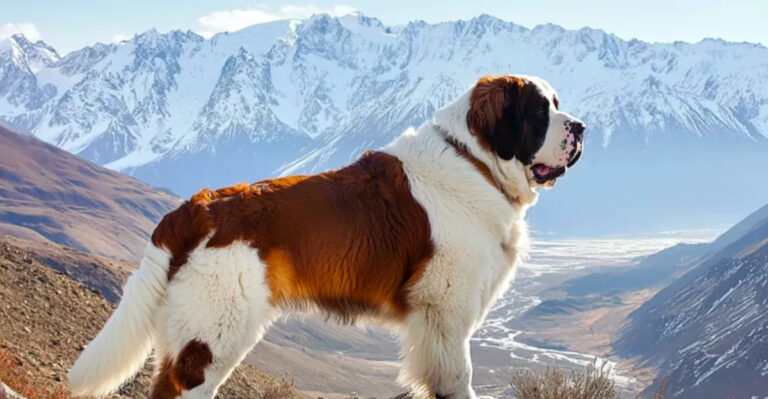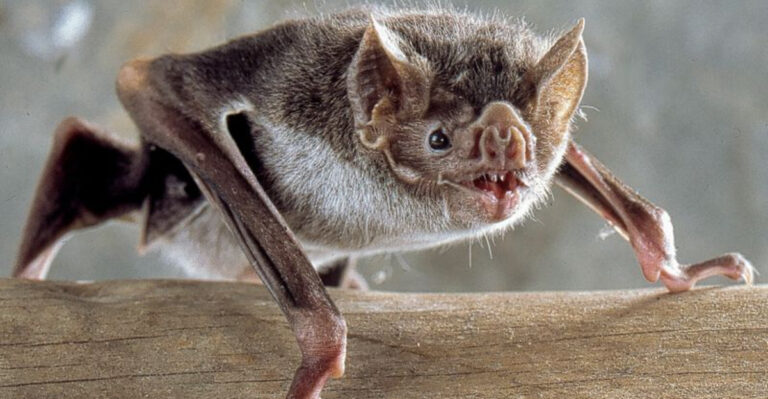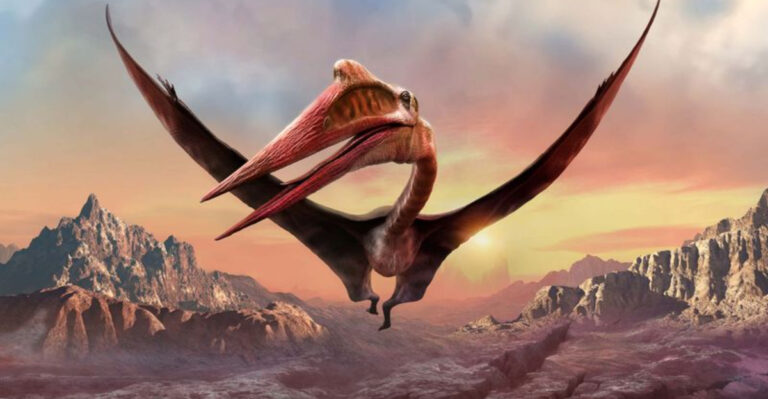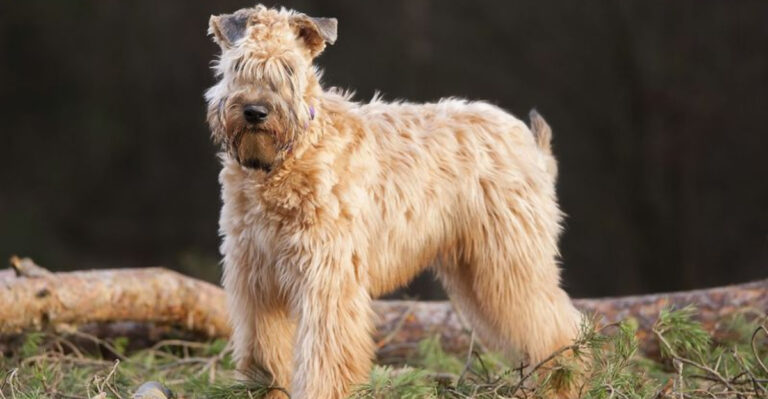12 Largest Dinosaurs That Once Roamed America
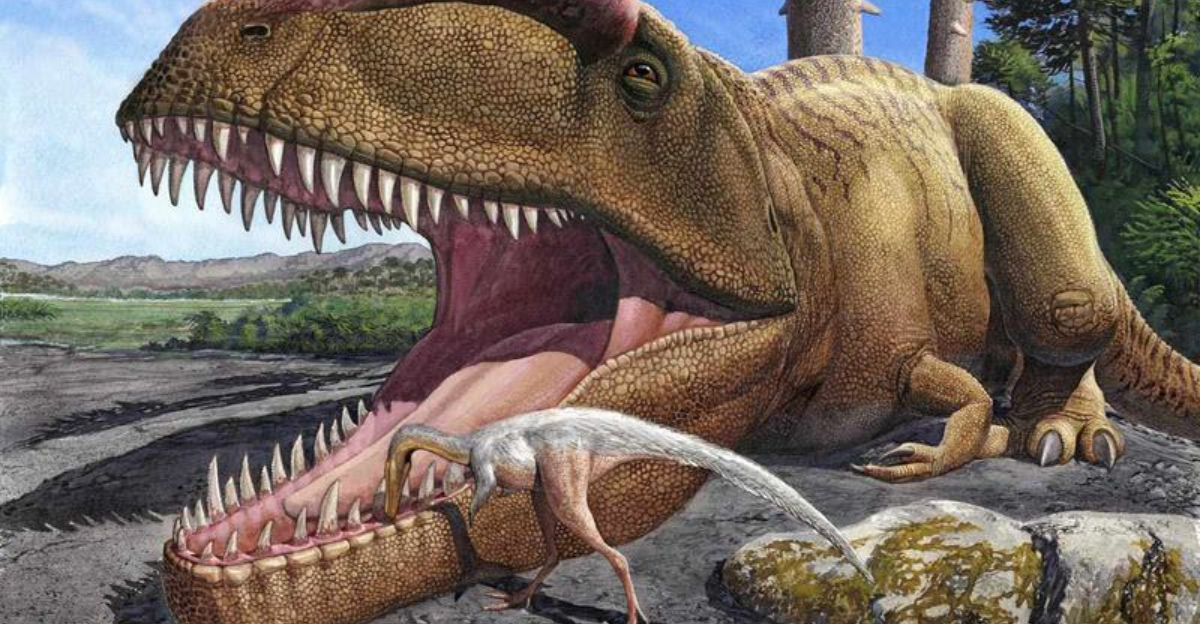
Dinosaurs have always captured the imagination of both young and old alike. Among these prehistoric giants, some of the largest species to ever roam the earth were found right here in America.
From the towering Sauroposeidon to the formidable Tyrannosaurus Rex, these dinosaurs were not only massive but also fascinating in their own right. Join us as we explore the biggest dinosaurs that once called America their home.
1. Spinosaurus
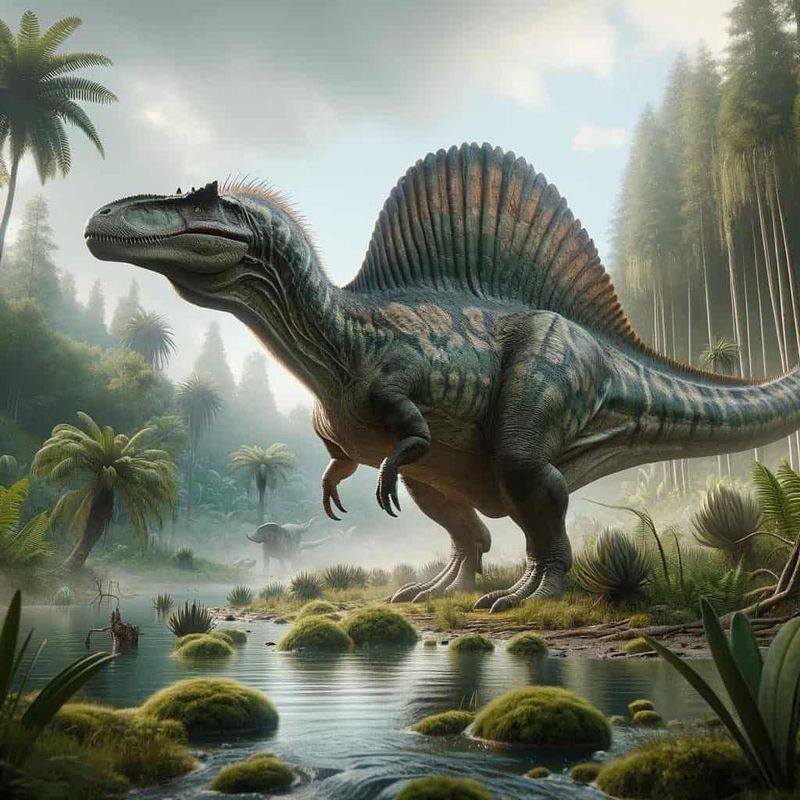
The Spinosaurus is considered one of the largest carnivorous dinosaurs ever to exist. It’s believed to have measured up to 50-59 feet long and weighed several tons.
The most notable feature of Spinosaurus is its sail-like structure on its back, formed by elongated spines, which likely helped regulate its body temperature or served as a display feature.
Unlike most theropods, Spinosaurus is believed to have been semi-aquatic, with adaptations that made it an excellent swimmer. It is known for its massive jaws, which resemble those of a crocodile, enabling it to hunt fish and other aquatic prey.
2. Alamosaurus
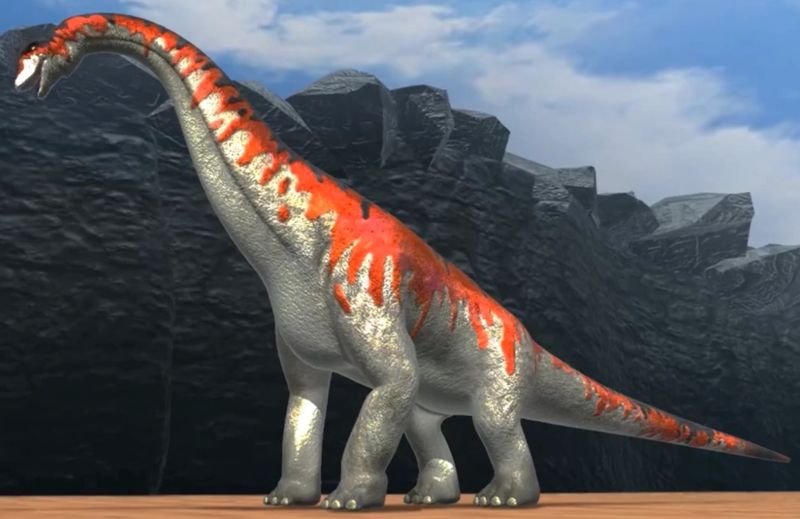
The Alamosaurus is one of the largest known sauropods to have roamed North America during the Late Cretaceous period. This plant-eating giant could reach lengths of up to 100 feet, with a massive neck and tail.
Alamosaurus lived in what is now the southwestern United States, particularly around New Mexico, and was part of a diverse ecosystem where it likely fed on conifers and other vegetation.
Despite its enormous size, little is known about its lifestyle, as fossils of this species are rare. However, it’s believed that its immense size helped protect it from predators.
3. Diplodocus
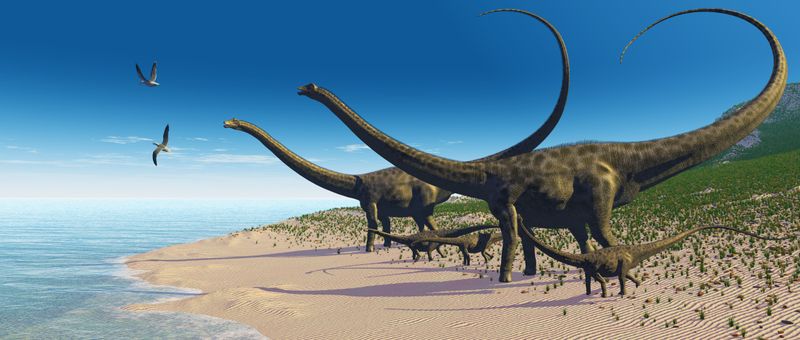
The Diplodocus was one of the most iconic dinosaurs of the Jurassic period, known for its extremely long neck and tail. Growing up to 85 feet long, it was a long and slender herbivore that grazed on plants.
Its neck, though long, was relatively lightweight, supported by a unique structure of bones that allowed it to reach high vegetation. Diplodocus lived in herds, and its size likely acted as a defense mechanism against carnivores. It is also famous for its whip-like tail, which may have been used for communication or defense.
4. Sauroposeidon
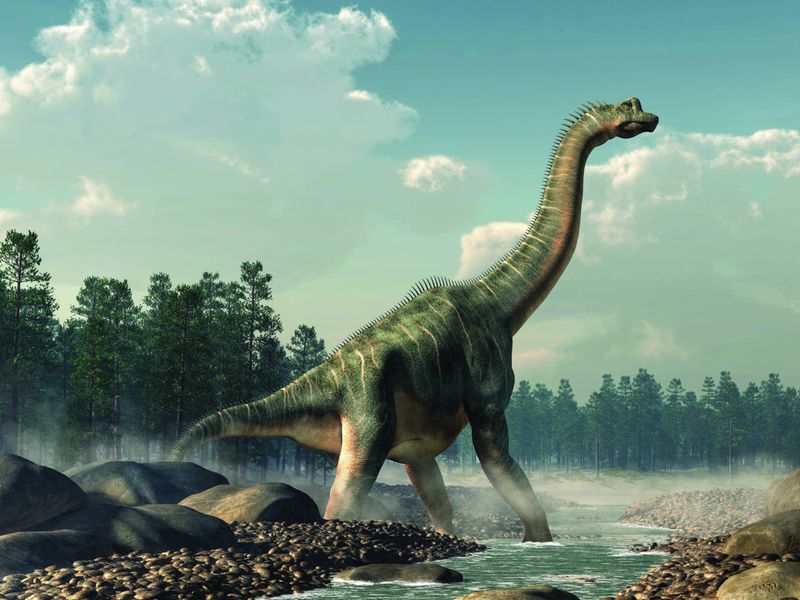
Sauroposeidon was a colossal sauropod that roamed North America during the Early Cretaceous period. Its name means “lizard earthquake god,” a fitting title considering its massive size, with estimates placing it around 110 feet in length.
It was one of the tallest dinosaurs, with its neck alone stretching over 40 feet, allowing it to feed on treetops high above other herbivores. Its sheer size and height would have made it an impressive sight and potentially immune to most predators of its time.
5. Giganotosaurus
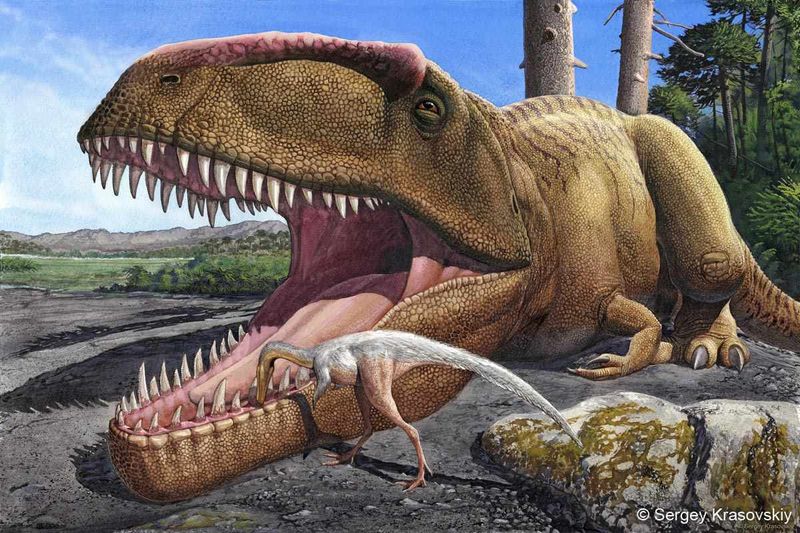
The Giganotosaurus was a fierce predator that lived in what is now South America during the Late Cretaceous period. It was one of the largest theropod dinosaurs, measuring up to 40 feet long and weighing up to 8 tons.
This carnivorous giant hunted in packs, similar to other large predatory dinosaurs, and was likely an apex predator in its environment. Its massive size and sharp teeth made it a formidable hunter capable of taking down large prey.
6. Edmontosaurus
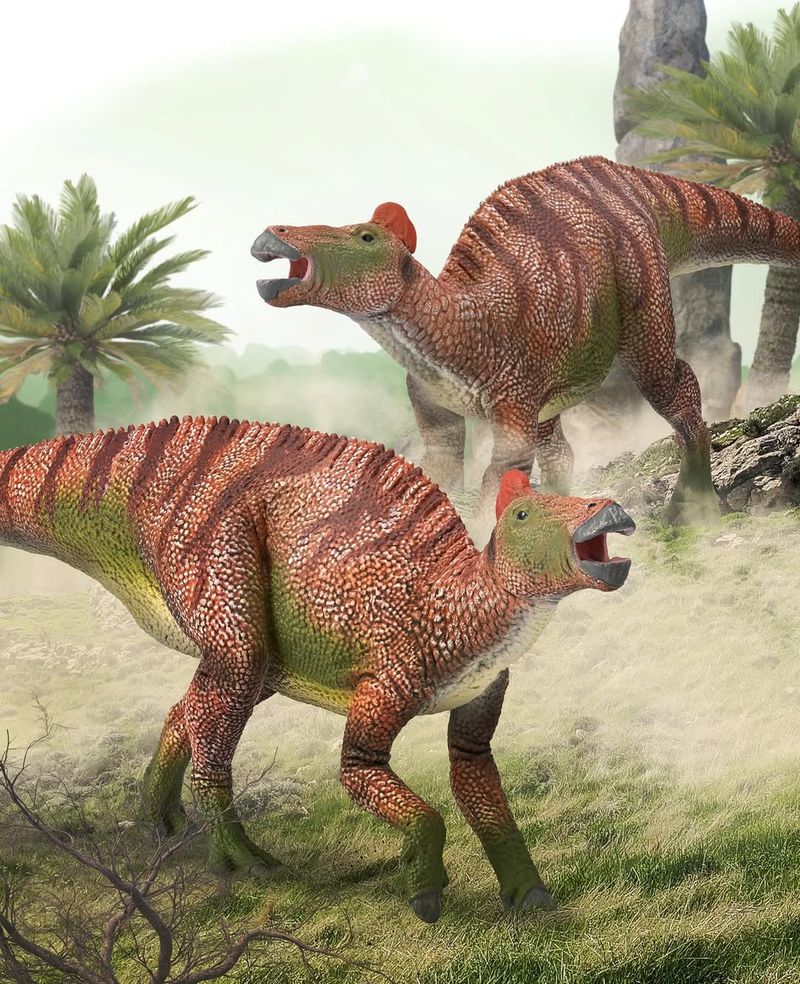
The Edmontosaurus was a large herbivorous dinosaur that lived during the Late Cretaceous period. It is famous for being one of the most common hadrosaurids, or “duck-billed” dinosaurs, and could grow up to 40 feet long.
Edmontosaurus was a social animal, often found in herds, and was well-adapted for foraging in its environment. It had a broad, flattened snout resembling a duck’s bill, which helped it efficiently graze on vegetation. Fossils of this dinosaur are abundant, providing valuable insights into its behavior and ecology.
7. Tyrannosaurus Rex
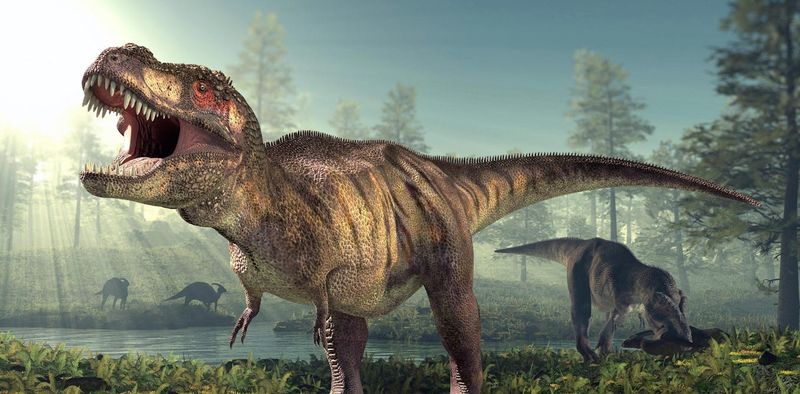
The Tyrannosaurus Rex, often considered the king of dinosaurs, was a fearsome carnivore that roamed North America during the Late Cretaceous period. It measured up to 40 feet long and stood over 12 feet tall.
Its powerful jaws, filled with sharp teeth, could crush bone with ease, and its massive legs allowed it to run at impressive speeds for its size.
T. rex was likely an apex predator, hunting other large dinosaurs while also scavenging. Its small, seemingly useless arms were likely a mystery, but modern research suggests they may have been used for grasping prey or mating.
8. Brachiosaurus
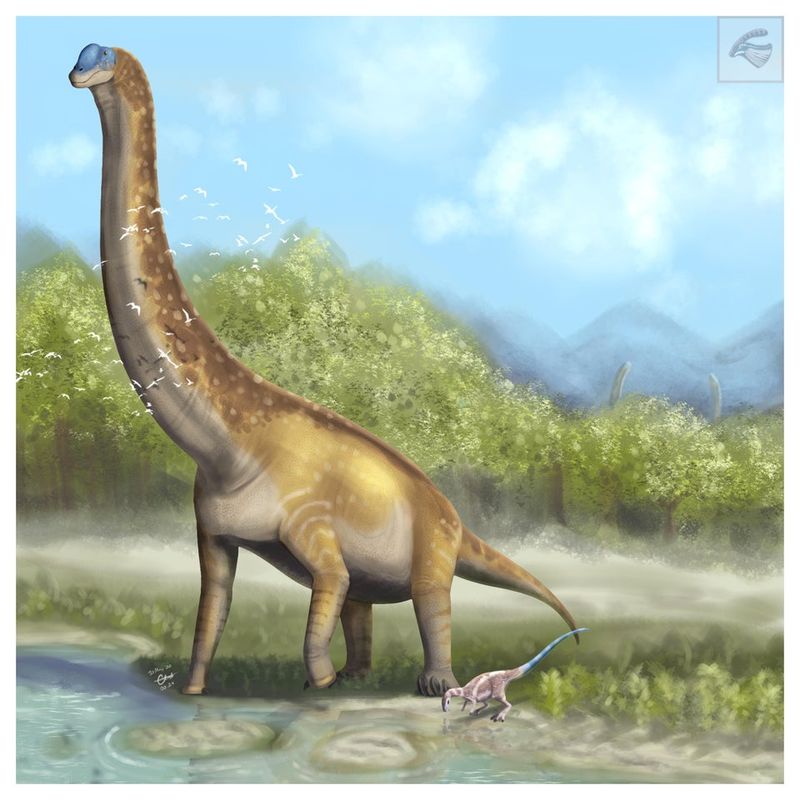
The Brachiosaurus was a massive sauropod that lived during the Late Jurassic period. Unlike many other sauropods, which had long necks that extended horizontally, the Brachiosaurus’s neck was held upright, allowing it to reach high trees and feed on vegetation that other herbivores couldn’t access.
Growing up to 85 feet long and weighing up to 60 tons, it was one of the largest land animals of its time. Its distinct body structure, with longer front legs than hind legs, gave it a unique appearance compared to other sauropods.
9. Apatosaurus
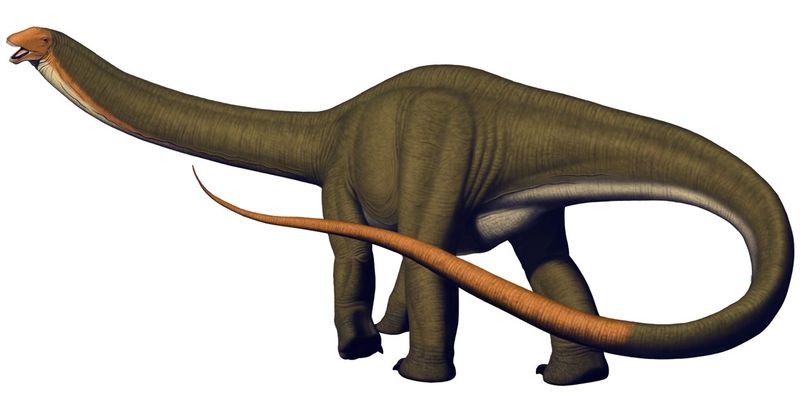
The Apatosaurus was a giant herbivorous dinosaur that roamed North America during the Late Jurassic period. It grew up to 75 feet long and weighed around 25 tons. Apatosaurus had a long neck and tail, characteristic of many sauropods, and used its long neck to reach vegetation high in the trees.
Though it was a slow-moving giant, its size likely protected it from predators. Apatosaurus is often confused with Brontosaurus, but recent studies have shown that they are separate species.
10. Camarasaurus
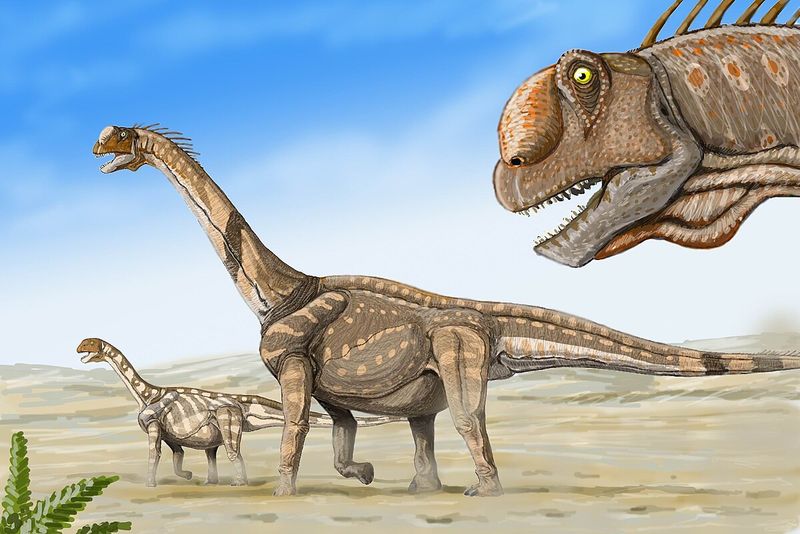
The Camarasaurus was another massive sauropod that lived during the Late Jurassic period. This herbivore had a shorter neck compared to other sauropods like Brachiosaurus but was still large, growing up to 75 feet long.
Camarasaurus had a relatively robust body and a wide, flat skull with large teeth for chewing tough plant material. It likely lived in herds, offering protection against predators, and its massive size helped deter attacks from carnivores.
11. Seismosaurus
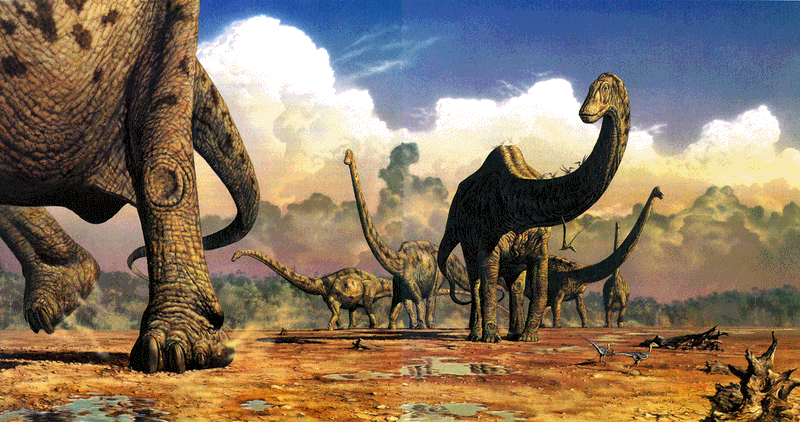
The Seismosaurus was one of the largest dinosaurs ever to have lived, reaching lengths of up to 110 feet. It was a long-necked herbivore that lived in the Late Jurassic period and likely fed on conifers and other vegetation.
Seismosaurus was named for its immense size, which made it one of the heaviest land animals of its time. Its size likely helped protect it from predators, and it may have lived in herds for additional safety.
12. Argentinosaurus
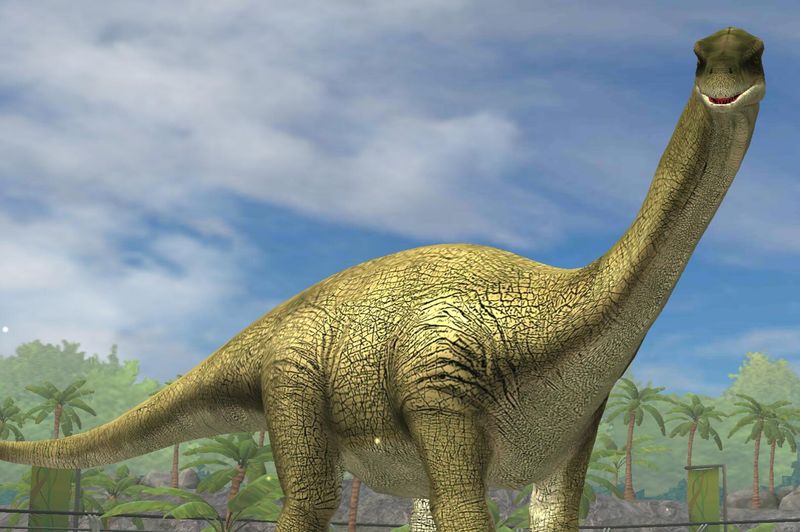
The Argentinosaurus is widely regarded as one of the largest dinosaurs ever, reaching lengths of over 100 feet and weighing up to 100 tons. This colossal sauropod lived in what is now Argentina during the Late Cretaceous period.
It had a long neck and tail, characteristic of many sauropods, and likely fed on massive amounts of plant material each day. Argentinosaurus’s sheer size made it nearly invulnerable to predators, and it likely moved in herds for protection and socializing.

